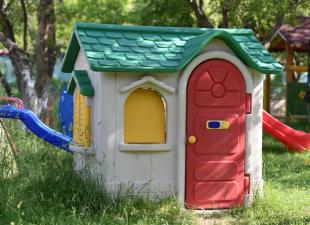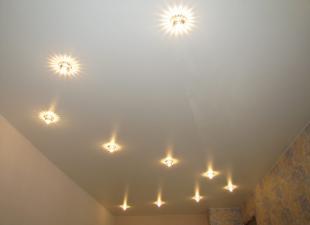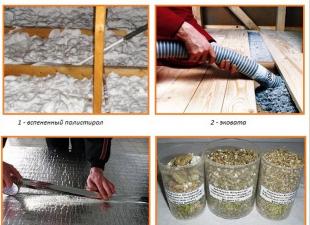Liquid wallpaper appeared on the Russian market relatively recently and quickly gained popularity among consumers. The demand is due to the practicality of the finishing material. Compared to traditional wallpapers, liquid wallpapers have advantages: they do not form unaesthetic joints, perfectly level the surface, are easy to apply and are environmentally friendly. To get high-quality and evenly painted walls of the room, you need to follow the rules for preparing the surface for painting and finishing.
Preparing walls for liquid wallpaper
Liquid wallpaper is a composition consisting of natural materials and intended for decorative decoration of the ceiling and walls. Environmentally friendly material does not emit harmful substances that cause allergic reactions.
A prerequisite for applying liquid wallpaper is a perfectly flat surface. If it is heterogeneous, with foreign impurities and irregularities, then it will not be possible to achieve a uniform color. The remaining depressions increase the material consumption.

The surface of the wall should be primed with hardened water dispersion paint. To avoid unwanted shades, the paint must be matched to the wallpaper. You can apply liquid wallpaper on different surfaces:
- drywall;
- concrete;
- brickwork;
- wood.
Attention! Eliminating leaks when preparing walls is very important. If they are not eliminated, after a while stains will appear on these areas, which will give the decor an unaesthetic look. It is necessary to mechanically clean the working area from dirt, and then apply oil white paint.
Preparation of various surfaces
The preparation of different types of surfaces for liquid wallpaper is different. The features of the process depend on the material from which the wall of the room is made and previous cosmetic repairs.
Advice. Before carrying out work, the surface must be cleaned of dust and dirt, as well as of residues of materials, plaster and putty. Deep cracks must be putty.
Walls of "Stalinist" and "Khrushchev" houses
In the houses of the old housing stock, the surface of the walls is characterized by old streaks and stains. Finishing work is carried out in order to improve the appearance of structures.

Preparing the walls of "stalinka" and "Khrushchev" for the application of liquid wallpaper comes down to the following:
- Surface treatment with hardening primers with deep penetration properties. This will ensure reliable adhesion of the base and leveling layers.
- A layer of primer is coated with water-based paint in order to whiten the surface of the walls.
Plasterboard structures
In modern construction and during repair work, gypsum plasterboards are often used. They are installed in the following cases:
- installation of partitions when redeveloping the space of the room;
- for decoration of decorative structures;
- installation of multi-level ceilings;
- false walls - leveling structures consisting of gypsum plasterboards and a frame made of wooden bars or metal guides.

In the process of work, the wall of the room is prefabricated, therefore it is necessary to putty the formed joints of the sheets. To enhance adhesion, it is recommended to use a special reinforcing mesh. The powder must be mixed in a container, from which it will be convenient to get it with a wide and narrow spatula.
Plasterboard walls must be completely filled. This will avoid unwanted selection of joint areas on the surface, as well as cover the caps of the self-tapping screws that secure the drywall sheets to the guide profiles.
After the continuous puttying procedure, you can apply a layer of primer or water-based paint with PVA. For priming plasterboard surfaces, glue is added in a 3: 1 ratio.
Plastered brick and concrete walls
Such surfaces are characterized by roughness and increased absorbency. If the walls are not properly prepared, the surface will repeatedly absorb the water-based paint, preventing the desired effect from being achieved. Additionally, this will cause overspending of paint, which is more expensive than the materials required for leveling and priming.

Before starting repair work, previous finishing materials must be removed from the surface. Plastered concrete surfaces are prepared for liquid wallpaper as follows:
- The surface is covered with plaster putty. It will even out the wall, fill cracks and pores in the base.
- A primer is applied before and on top of the putty; if necessary, the procedure is repeated twice. The primer secures all layers of the structure and promotes deep adhesion, which makes the finish more durable.
- If finishing in light colors is planned, then it is necessary to additionally cover the primed wall surface with white water-based paint. This will avoid the appearance of translucent spots on the surface.
Advice! If the walls of the room are in good condition, instead of special soil, you can paint the surface with a water-based facade composition, while adding PVA glue in approximate proportions of 2: 1. The water-based composition, applied in 2-3 layers, is able to replace the base and primer leveling the color of the surface.
Surfaces made of wood and derivatives
The main problem with wooden surfaces is their ability to deform when exposed to moisture. The instability to moisture requires the application of a special impregnation.

The preparation of walls made of wood, fiberboard, MDF or plywood for liquid wallpaper comes down to the following processes:
- Initially, it is necessary to make sure that the structures are securely fastened, which will avoid surface deformation during subsequent manipulations.
- Application of a primer to the surface (performed twice).
- Coating walls with water-based paint in order to create a base for applying the material - liquid wallpaper.
Technology for applying liquid wallpaper
The procedure for applying liquid wallpaper to the walls is carried out from any convenient place - from a door, window, corner or middle of the wall. The material does not contain connecting seams, so it lays down evenly and evenly.
 parlini.ru Repair of an apartment, a summer residence and a house.
parlini.ru Repair of an apartment, a summer residence and a house.


